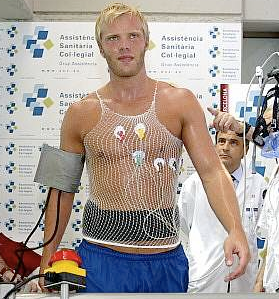Iceland opened the qualifying campaign at home to Nordic neighbours Norway. A 2-0 victory, with goals from Árnason and Finnbogson, set the tone for a successful and exciting journey which produced five victories, two draws and three defeats from ten games. This resulted in securing the second spot in the group behind the undefeated and all conquering Switzerland. The draw for the play-offs threw up Croatia which was to become arguably the biggest and most significant game in the history of Icelandic soccer. It was held in the Laugardalsvöllur Stadium in Reykjavík in November 2013. A pitch black sky in the land of ice, snow drenched floors reflected by the chill of the moon. [READ MORE]
People were in hibernation in November, nevertheless 9700 (95% of the stadia capacity) filed in to back their country in the first leg, dreaming of Brazil. The match ended in a hard fought 0-0 draw and Iceland travelled to Zagreb with a newfound level of optimism, hoping that a positive result could secure a place in the draw for a first ever World Cup. Unfortunately, goals from Dario Srna and Mario Mandzukic saw KSI fall at the final hurdle. A fairy-tale story which would have seen Iceland become the smallest nation to ever qualify for a World Cup were dashed, and as we now know, they would have romantically played against Brazil in the opening game of the tournament.
However, adversity fuels the desire to succeed: the failure to qualify should not be looked back on as a negative. KSI showed they can compete with much larger nations and the near miss of qualification for the World Cup could be used a stepping stone for qualification for Euro 2016. Three wins from three has seen the Icelandic’s set the tone for what should be an interesting and successful eighteen months as they approach France.

The original prototype
Reasons for this spike in success can be attributed, as mentioned, back to two key factors: an increase in development and investment in the homeland, and an increase in Icelandic soccer players plying their trade in Europe’s finest leagues.
The improvement in facilities, coaching and a focus on football as a national sport are undoubtedly key components, providing improved facilities for Iceland’s younger generations to develop skills, coupled with a philosophy that has helped improve the national team’s fortunes steadily over the last fourteen years. A look at the latest UEFA coefficients shows that Iceland is improving, albeit at a steady pace. The rating of 0.375 in 2010-11 has now been increased to 2.500 in 2013-2014.
You would be forgiven, several years ago, for only being able to recall Eidur Gudjohnsen when asked about Icelandic soccer players in Europe’s elite. But now their game is booming with the undoubted star of the current side being former Reading man, Glyfi Sigurdsson. After an inconsistent spell at Tottenham he is running the show for Swansea: assists, goals and man of the match performances have been flowing so far. Thankfully he’s taken that confidence and form into his international fixtures, with the Netherland’s victory being his cherry topping.
In front of him are the prototypes; the two stereotypical Icelandic soccer players, built on protein and fresh air. Kolbeinn Sigthorsson and Alfred Finnbogson are both architecturally vital for the nation’s style of play. Aged 24 and 25 respectively, there is still plenty to come from these young talents who do so well leading the line and bringing their talisman in to play. Competing regularly against Europe’s crème will no doubt bring them both on, too, for Ajax in the Champions League and for Real Sociedad against La Liga’s finest.
Lest we forget that Iceland only has a population of 325,000 – Coventry has as many people, but the closest the midland city has ever come to producing flair came via Lady Godiva nine hundred years ago – making every achievement for the Scandinavians all the more impressive. All in all, the victory over the Netherlands was the icing on the cake for the KSI rise through the international scene, from minnows to a competitive European nation. After the positive start, qualification will be expected, and there is hope that this side can take their ascendancy through the game in to France ’16 in a summer where the sun won’t set.
